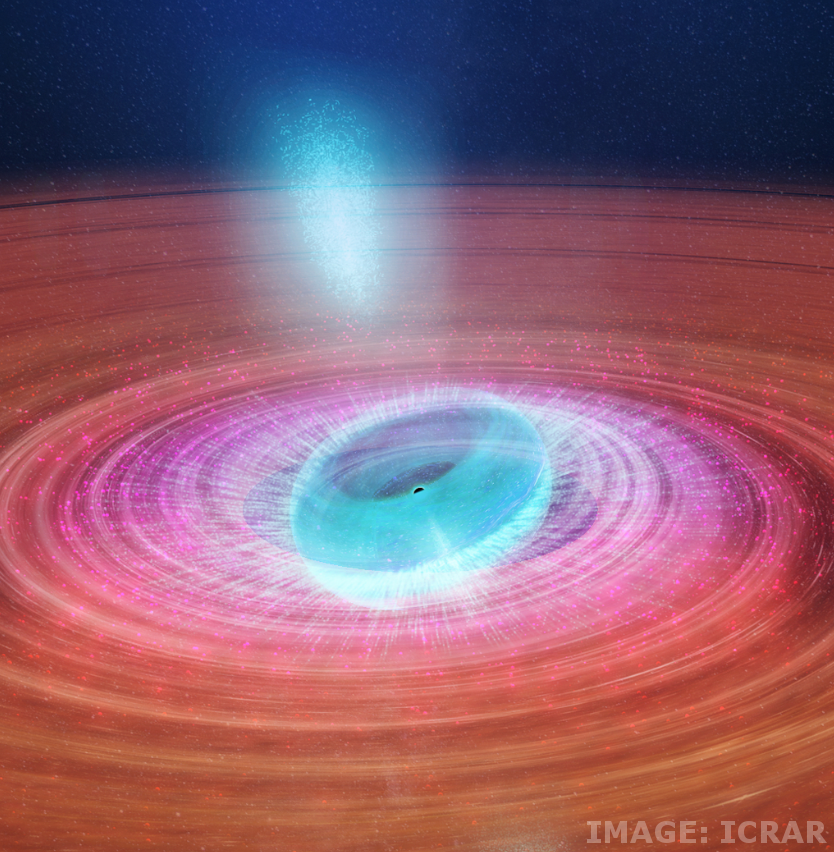Black hole hunger modelled
 An advance in astrophysics has allowed scientists to predict the feeding patterns of a supermassive black hole.
An advance in astrophysics has allowed scientists to predict the feeding patterns of a supermassive black hole.
A team of physicists from Syracuse University, MIT, and the Space Telescope Science Institute has accurately forecasted the behaviour of a black hole, using detailed modelling validated by real-time astronomical observations.
Black holes are invisible by nature, but scientists can study them by observing the events around them, particularly through tidal disruption events (TDEs).
These occur when a star is pulled apart by a black hole’s immense gravity, creating a bright disk of debris that emits X-rays and ultraviolet light, detectable by advanced telescopes.
AT2018fyk is a unique case of a repeating partial TDE, where the star was not completely destroyed by the black hole and continues to orbit it, facing repeated disruptions.
In a recent study, the scientists' model accurately predicted that the light source would dim in August 2023.
“The observed emission shutoff shows that our model and assumptions are viable,” explained Eric Coughlin, a physics professor at Syracuse University.
The findings suggest the star is slowly being consumed by the black hole. The results were published in The Astrophysical Journal Letters.
This success not only confirms the model's accuracy but also opens new ways to study black holes.
With improved detection technology, scientists hope this model will help identify more such events.
The model predicts that AT2018fyk will brighten again in 2025 as the black hole consumes more of the star's material, with another dimming expected in 2027.
The ability to predict such events is a major advance in astrophysics, offering new insights into the extreme environments around black holes and how they interact with stars.








 Print
Print